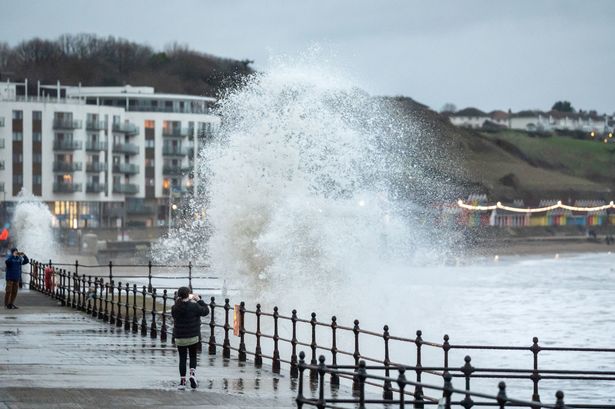The Met Office has issued a severe weather warning for Storm Éowyn, forecasting disruptive and potentially damaging conditions across various regions of the country over the weekend. The storm is expected to bring widespread gales, with wind gusts reaching up to 80 mph in exposed coastal areas and high ground. These powerful winds pose a significant risk of structural damage to buildings, disruption to transportation networks, and power outages. The Met Office urges residents to take necessary precautions, including securing loose objects outdoors, avoiding unnecessary travel during the peak of the storm, and staying updated on the latest weather forecasts and warnings. The specific areas most at risk will depend on the storm’s track, which is being closely monitored by meteorologists. Coastal communities are particularly vulnerable to high winds, storm surges, and large waves.
Storm Éowyn is predicted to develop within a larger area of low pressure moving rapidly across the Atlantic. This low-pressure system will interact with the jet stream, a band of strong winds high in the atmosphere, intensifying the storm as it approaches land. The interaction will create a tight pressure gradient, resulting in the strong winds anticipated across the country. The Met Office’s warning highlights the potential for significant disruption to daily life, particularly travel and outdoor activities. The strong winds could lead to flight cancellations, delays in rail services, and hazardous driving conditions. Fallen trees and debris also pose a risk to road users. The public is advised to avoid coastal areas during the storm due to the danger of large waves and strong winds.
In addition to the strong winds, Storm Éowyn is also expected to bring heavy rainfall to some areas. This rainfall, combined with the already saturated ground in many regions, increases the risk of flooding. Rivers and streams could overflow, and surface water flooding may occur in urban areas. The Met Office is working closely with partner agencies, including local authorities and emergency services, to prepare for the potential impacts of the storm. Flood warnings may be issued for specific areas as the storm develops, and residents in flood-prone areas are encouraged to take preventative measures.
The Met Office uses a sophisticated suite of forecasting tools, including weather models, satellite data, and observations from weather stations, to track and predict the path and intensity of storms. These tools allow meteorologists to issue timely and accurate warnings, giving the public time to prepare. The severity of the storm warning reflects the confidence level in the forecast and the potential impact of the weather event. In the case of Storm Éowyn, the warning underscores the need for vigilance and preparedness. The public is encouraged to stay informed about the latest weather updates and to follow the advice of the Met Office and other relevant authorities.
The potential impacts of Storm Éowyn extend beyond immediate disruption and damage. Strong winds can cause damage to trees and disrupt ecosystems, while heavy rainfall can lead to soil erosion and water pollution. The long-term effects of severe weather events like Storm Éowyn highlight the importance of climate resilience and adaptation measures. Investing in infrastructure that can withstand extreme weather, developing early warning systems, and promoting community preparedness are crucial steps in mitigating the risks associated with future storms. The increasing frequency and intensity of extreme weather events underscore the need for a comprehensive approach to climate change adaptation.
Storm Éowyn serves as a reminder of the power of nature and the importance of being prepared for severe weather. Staying informed about the latest weather forecasts, taking appropriate safety precautions, and following the advice of authorities are crucial for minimizing the risks associated with storms. While the Met Office and other agencies work tirelessly to predict and warn about these events, individual preparedness plays a vital role in ensuring safety and minimizing disruption. Being prepared means having an emergency plan, securing your property, stocking up on essential supplies, and knowing how to access reliable information during a storm. By working together and taking proactive steps, we can mitigate the impacts of severe weather and build more resilient communities.














